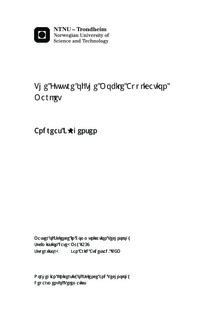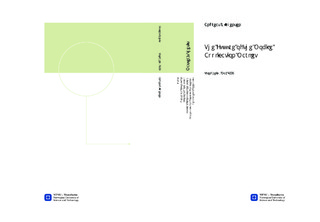| dc.contributor.advisor | Audestad, Jan Arild | nb_NO |
| dc.contributor.author | Jørgensen, Andreas | nb_NO |
| dc.date.accessioned | 2014-12-19T14:16:07Z | |
| dc.date.available | 2014-12-19T14:16:07Z | |
| dc.date.created | 2014-08-27 | nb_NO |
| dc.date.issued | 2014 | nb_NO |
| dc.identifier | 741369 | nb_NO |
| dc.identifier | ntnudaim:11104 | nb_NO |
| dc.identifier.uri | http://hdl.handle.net/11250/262967 | |
| dc.description.abstract | The smartphone market and the mobile application market is booming up in tact with smartphone shipments estimated to double in 2016 and with approximately 100 000 new mobile applications being uploaded every month to Appstore and Google Play combined it is obvious that the mobile application market is emerging. Digital advertising is becoming smarter and more valuable and less extreme userbases are required to be able to profit from mobile advertising. But even though more and more applications enter the market only few will survive over time and only few will be able to generate revenue from advertising. Snapchat is a good example of one of the mobile applications with huge potential in terms of mobile advertising and was of the beginning of 2014 valued to over $3-4b, but might have a limited timeframe to live up to the high valuation as different risks exist and could influence the further development of the Snapchat userbase. History also plays a big part when it comes to analysing the future of Snapchat, and Snapchat can be seen as in the same category as many online social networks that have failed over time. The few apps that make it to the top almost always reside in the category of social apps (or anti-social apps as discussed in section 4.3) but there does not seem to emerge a Winner takes it all-market, mainly very often because of some sort of product differentiation between the different social or anti-social mobile applications, and because of different mobile applications enters different geographical markets at launch, and therefore already has a big userbase before entering markets with already existing similar applications. A good example might be the three very similar mobile messaging apps Viber, WhatsApp and WeChat, all having large userbases around the world. Games also seem to be in the top layer when it comes to revenue generation, but the market for games is clogging up and might give less opportunities in the future. Another conclusion from studying the mobile application market is that many users are fleeing from social networks (like Facebook and Twitter) to anti-social networks where users only connect with a few number of users. This might be one of the reasons that Snapchat has gained the popularity as it has and why Facebook deciced to acquire WhatsApp for $18b. | nb_NO |
| dc.language | eng | nb_NO |
| dc.publisher | Institutt for telematikk | nb_NO |
| dc.title | The Future of the Mobile Application Market | nb_NO |
| dc.type | Master thesis | nb_NO |
| dc.source.pagenumber | 97 | nb_NO |
| dc.contributor.department | Norges teknisk-naturvitenskapelige universitet, Fakultet for informasjonsteknologi, matematikk og elektroteknikk, Institutt for telematikk | nb_NO |

